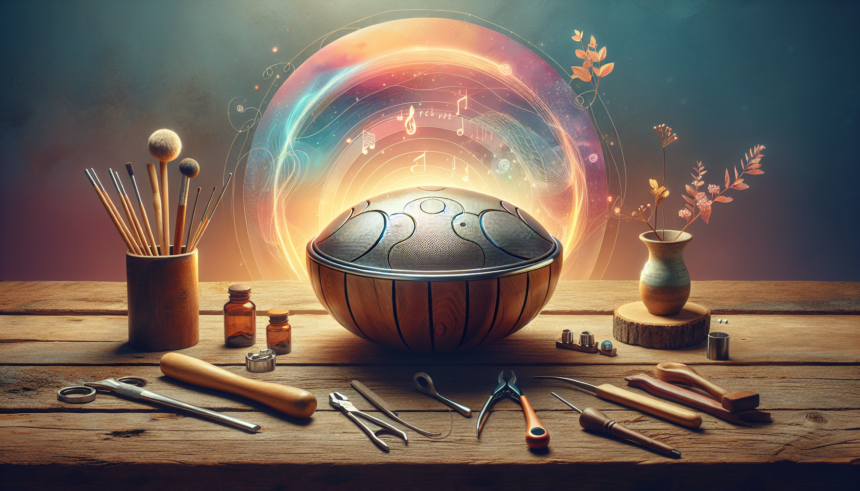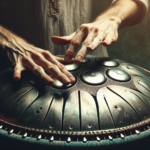Handpans, often described as mystical and captivating, provide a unique musical experience. Over the years, these instruments have gained mainstream popularity, attracting musicians and hobbyists alike. One of the key aspects of owning a handpan is customization. Proper customization can significantly enhance both the performance and the personal experience of playing this fascinating instrument. This guide will walk you through the vital aspects of customizing your handpan for optimal performance.
Understanding the Basics
Before diving into the customization process, it is crucial to understand the structure of a handpan. Typically, a handpan consists of two hemispheres crafted from steel. The upper hemisphere contains a central note (also known as the Ding) and various tonal areas, while the bottom hemisphere usually has a resonating port.
Customization can involve changes in the scale, material, finish, and accessories.
Choosing the Right Scale
The scale determines the notes your handpan can play. Different scales evoke different emotions and atmospheres. Here are some popular scales used in handpans:
- D Minor (Celtic/Dorian): Evokes a sense of mysticism and serenity.
- C Major (Integral): Bright and uplifting; great for joyful expressions.
- Ake Bono: Exotic and meditative, often associated with Japanese music.
- Hijaz: Middle Eastern influence with a rich and engaging sound.
When choosing the scale, consider your musical preferences and the kind of emotional landscape you wish to create.
Material Selection
Material greatly influences the sound quality, durability, and aesthetic appeal of your handpan. The two primary materials used in handpan construction are:
- Nitrided Steel: Known for its corrosion resistance and durability. Produces warm and rich tones.
- Stainless Steel: Brighter and purer tones. More resilient to rust but less commonly used due to production complexity.
The choice of material should align with your desired sound characteristics and maintenance preferences.
Finishes and Coatings
The finish or coating on your handpan not only affects its appearance but also its durability. Popular finishes include:
- Raw Steel: Maintains the natural look of the steel. Requires regular maintenance to prevent rust.
- Lacquer: Adds a layer of protection against corrosion while enhancing aesthetics. Needs periodic reapplication.
- Electroplated: Offers excellent rust resistance and a sleek appearance. Generally higher in cost.
Choose a finish that complements the environment you intend to play in and the level of maintenance you are comfortable with.
Fine-Tuning and Calibration
Fine-tuning your handpan is crucial for achieving optimal sound quality. It involves adjusting the tension on the steel surface to ensure that each note resonates correctly.
This process is best handled by professionals due to the precision required. However, understanding the basics can be helpful for minor adjustments:
- Use a digital tuner to measure the pitch of each note area.
- Gently tap the surface using soft mallets to adjust tuning.
- Avoid excessive force as it may damage the instrument.
Regular fine-tuning can keep your handpan sounding its best over the years.
Maintenance and Care
Proper maintenance is crucial for sustaining the performance and longevity of your handpan. Here are some tips:
- Clean your handpan regularly using a microfiber cloth and mild soap.
- Avoid exposing the instrument to extreme temperatures and moisture.
- Store it in a padded bag or case to prevent physical damage.
- Use a protective oil, such as Phoenix Oil, to prevent rust formation.
By adhering to these maintenance tips, you can ensure that your handpan remains in excellent condition.
Accessories
Customizing your handpan experience also involves selecting the right accessories. Some useful accessories include:
- Padded Bags and Cases: Essential for protecting your handpan during transport.
- Stands: Enhance performance comfort and stability.
- Malets: Different mallets can help in achieving varied tones and dynamics.
- Recording Equipment: High-quality microphones and audio interfaces to capture the handpan’s sound accurately.
Choosing the right accessories can enhance your playing experience and ensure the safety of your instrument.
Experiment and Learn
Customization is not a one-time process; it is an ongoing journey. Experiment with different scales, materials, finishes, and accessories to discover what works best for you. Engage with the handpan community through workshops, forums, and social media groups to learn from the experiences of others.
Remember, the goal is to create an instrument that resonates with your personal style and preferences.
Conclusion
Customizing your handpan is a rewarding journey that can significantly enhance your musical expression and enjoyment. By selecting the right scale, material, finish, and accessories, and performing regular maintenance, you can create a handpan that is uniquely yours. Embrace the process, experiment, and continue to learn to achieve optimal performance and a fulfilling musical experience.
Frequently Asked Questions (FAQs)
1. How often should I tune my handpan?
It’s advisable to get your handpan tuned by a professional at least once a year or sooner if you notice any discrepancies in sound. Regular tuning ensures optimal performance and longevity.
2. Can I change the scale of my handpan?
Changing the scale of a handpan is a complex process that generally requires professional intervention. It’s often easier and more cost-effective to purchase a new handpan with the desired scale.
3. What is the best way to prevent rust on my handpan?
Regular cleaning, using protective oils like Phoenix Oil, and avoiding exposure to moisture and extreme temperatures can effectively prevent rust formation on your handpan.
4. Are there any specific brands recommended for beginners?
Brands such as Ayasa, Yishama, and Panart are highly recommended for their quality and durability. It’s always a good idea to try out different brands and consult with experienced players.
5. How do I choose the right handpan scale for me?
Listening to different scales and noticing your emotional response can help in selecting the right scale. Engaging with experienced players and attending handpan gatherings can also provide invaluable insights.





